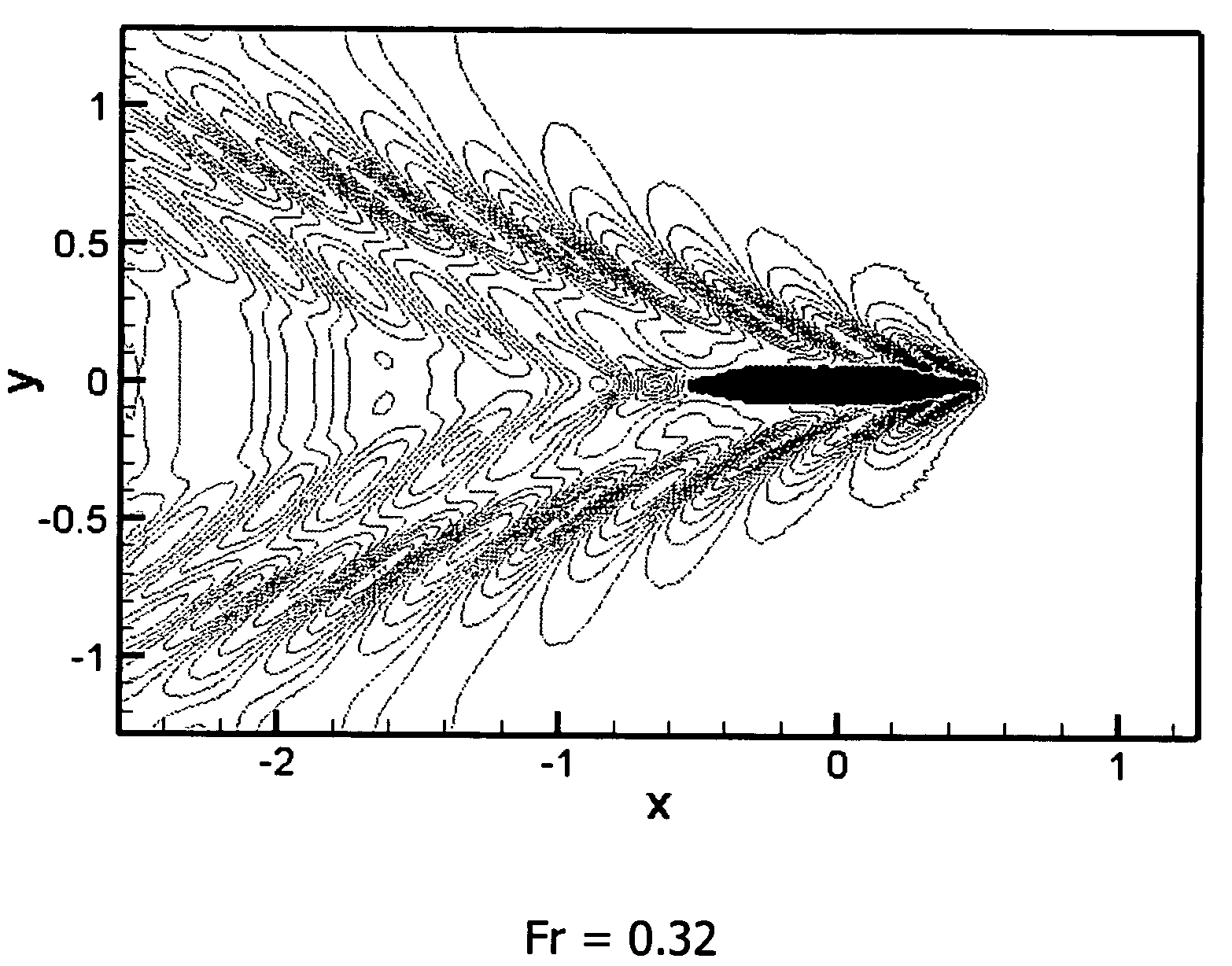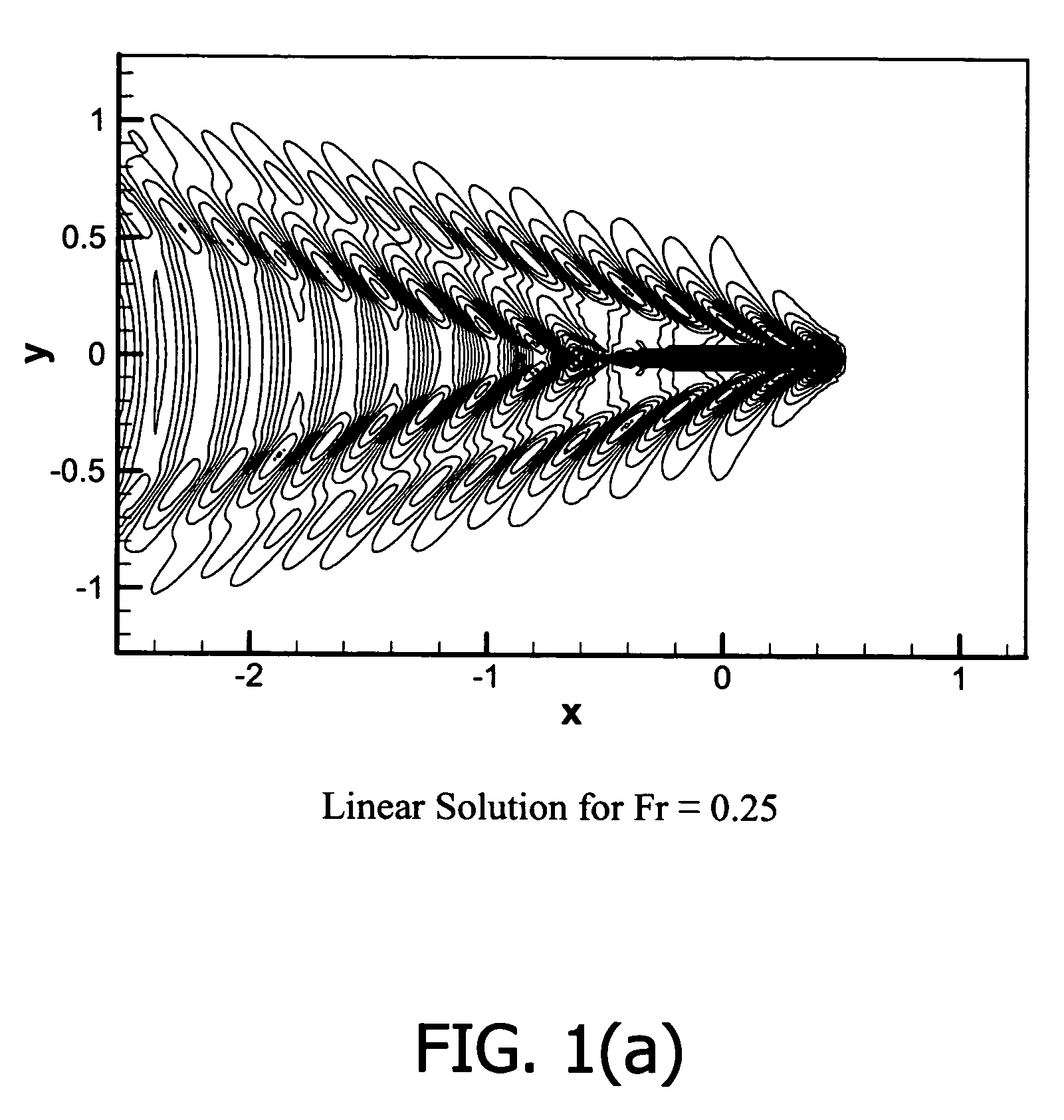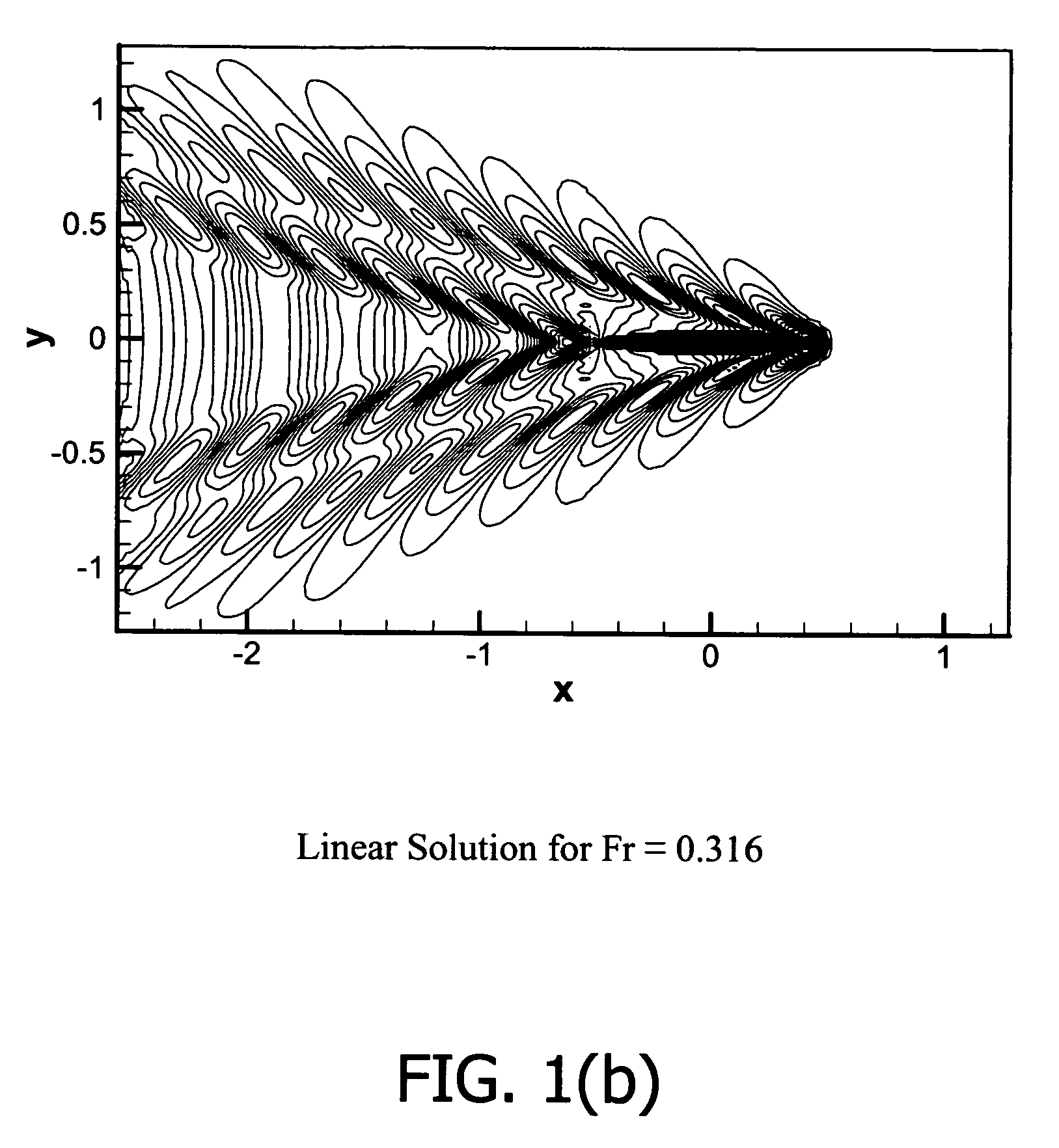Numerical modeling of nonlinear ship-wave interactions
a nonlinear, numerical modeling technology, applied in the field of interactions, can solve the problems of inability to model strongly nonlinear, impede the application of these conventional models, and computationally expensive nature of backbone algorithms
- Summary
- Abstract
- Description
- Claims
- Application Information
AI Technical Summary
Benefits of technology
Problems solved by technology
Method used
Image
Examples
Embodiment Construction
[0054]The present inventors disclose herein their development of their pseudo-spectral ship-wave interaction model, which as typically embodied is characterized by a mixed algorithm that affords advantages of both spectral method and boundary element method. The mathematical foundation of the inventive model and the results of ship moving in calm water are presented hereinbelow. The present invention's basic equations and boundary conditions are summarized in the first section, entitled “Mathematical Model.” The present invention's numerical methods are described in the second section, entitled “Numerical Method.” The present invention's results for steady motion of a ship in calm water are given in the third section, entitled “Benchmark Results,” which is followed by more general discussion regarding the present invention in the fourth section, entitled “Concluding Remarks.”
[0055]The present invention solves the wave-ship interaction problem by defining physical q...
PUM
 Login to View More
Login to View More Abstract
Description
Claims
Application Information
 Login to View More
Login to View More - R&D
- Intellectual Property
- Life Sciences
- Materials
- Tech Scout
- Unparalleled Data Quality
- Higher Quality Content
- 60% Fewer Hallucinations
Browse by: Latest US Patents, China's latest patents, Technical Efficacy Thesaurus, Application Domain, Technology Topic, Popular Technical Reports.
© 2025 PatSnap. All rights reserved.Legal|Privacy policy|Modern Slavery Act Transparency Statement|Sitemap|About US| Contact US: help@patsnap.com



